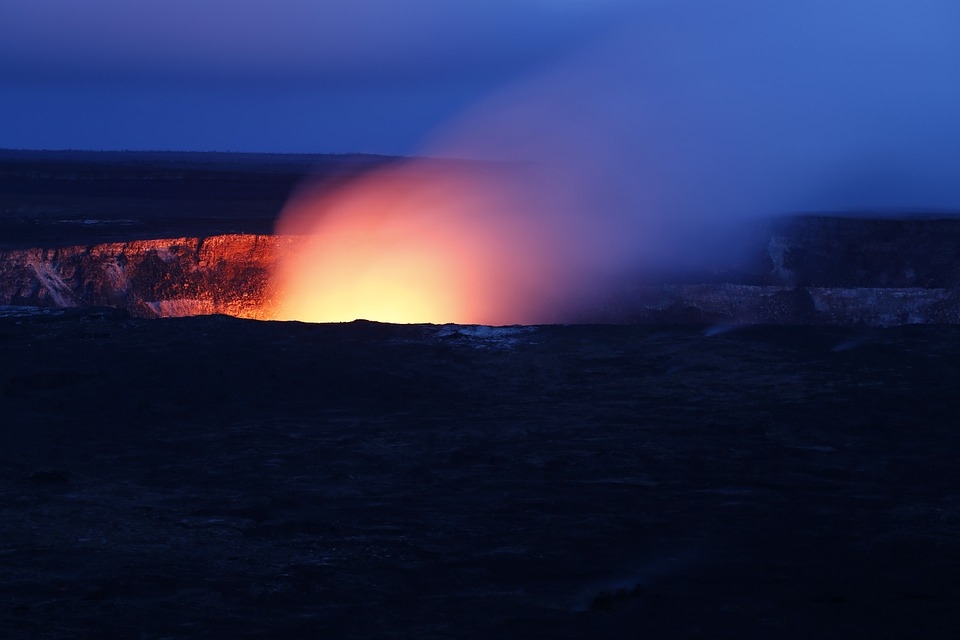From the various sources of carbon in the world today that are responsible for the world going through global warming, there is one unexpected source. A study claims that volcanic rocks are also contributing to the global warming that is happening.
Express reports that researchers from the University of Birmingham made a study about this claim. They compared the previous carbon emissions of recent years to the Paleocene-Eocene Thermal Maximum that occurred 65 million years ago. The scientists then traced the carbon emissions to the Large Igneous Provinces or LIPs. To note, LIPs are made up of high concentrations of igneous or magmatic rocks that form when magma surfaces from the Earth’s crust. According to the researchers, this LIP was able to cover Britain, Ireland, Norway, and Greenland.
One of the scientists involved in the study, Dr. Stephen Jones, explained that LIPs are associated to the spikes of climate change as well as the ecosystems that existed as far back as the Mesozoic period. The period in question was also in line with the mass extinctions that occurred. Upon calculating their findings, it suggests that this LIP was the biggest contributor to global warming.
However, there are scientists who are opposed to this claim. Previously in October, Phys reported that the Deep Carbon Observatory conducted a study spaced out over a period of 10 years on how carbon is produced and stored. The team, made up of 500 scientists from all over the world, found that man-made carbon is still the biggest contributor to the global warming problem the world has today. They explained that the carbon dioxide emissions produced in factories, companies, and other related industries, still outdo the carbon emissions from the volcanoes on a large scale.
Furthermore, the team of scientists also found that the man-made carbon emissions in 2018 alone were up to 37 gigatonnes, and that is only a portion of the carbon emissions produced in the last 10-12 years. This is compared to the total carbon present on Earth, which is about 43,500 gigatonnes, only two-tenths of one percent is found on land, and in the atmosphere.The rest of the carbon is stored below the crust, mantle, and core of the Earth.



 Eggs from men, sperm from women: how stem cell science may change how we reproduce
Eggs from men, sperm from women: how stem cell science may change how we reproduce  The brightest object in the universe is a black hole that eats a star a day
The brightest object in the universe is a black hole that eats a star a day  Larger and more frequent solar storms will make for potential disruptions and spectacular auroras on Earth
Larger and more frequent solar storms will make for potential disruptions and spectacular auroras on Earth  Synthetic human embryos let researchers study early development while sidestepping ethical and logistical hurdles
Synthetic human embryos let researchers study early development while sidestepping ethical and logistical hurdles  What is minoxidil, the anti-balding hair growth treatment? Here’s what the science says
What is minoxidil, the anti-balding hair growth treatment? Here’s what the science says  If life exists on Jupiter’s moon Europa, scientists might soon be able to detect it
If life exists on Jupiter’s moon Europa, scientists might soon be able to detect it  The mystery of consciousness shows there may be a limit to what science alone can achieve
The mystery of consciousness shows there may be a limit to what science alone can achieve  Customizing mRNA is easy, and that's what makes it the next frontier for personalized medicine − a molecular biologist explains
Customizing mRNA is easy, and that's what makes it the next frontier for personalized medicine − a molecular biologist explains  Six space missions to look forward to in 2024
Six space missions to look forward to in 2024  Black hole, neutron star or something new? We discovered an object that defies explanation
Black hole, neutron star or something new? We discovered an object that defies explanation  Alpha, beta, theta: what are brain states and brain waves? And can we control them?
Alpha, beta, theta: what are brain states and brain waves? And can we control them?  How do airplanes fly? An aerospace engineer explains the physics of flight
How do airplanes fly? An aerospace engineer explains the physics of flight  The rising flood of space junk is a risk to us on Earth – and governments are on the hook
The rising flood of space junk is a risk to us on Earth – and governments are on the hook  Genetic diseases: How scientists are working to make DNA repair (almost) a piece of cake
Genetic diseases: How scientists are working to make DNA repair (almost) a piece of cake 































